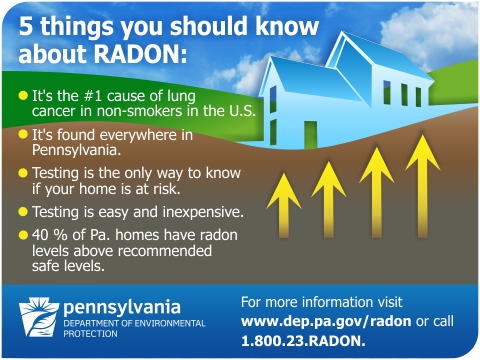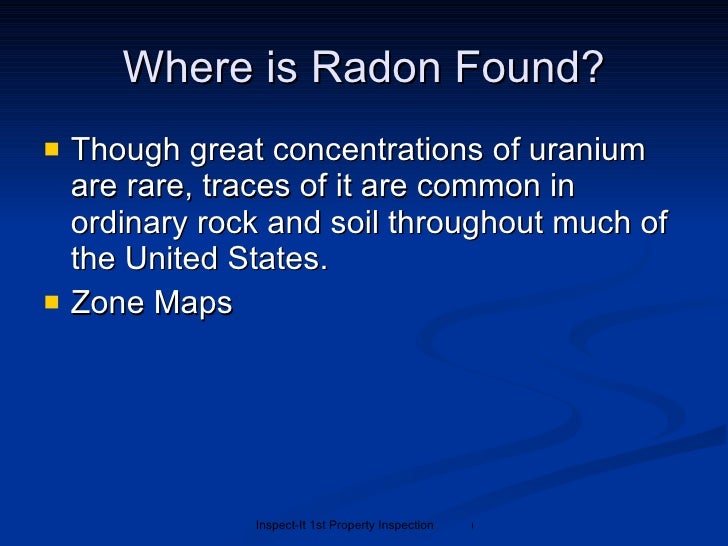More on Wellness
Nationwide, virtually 1 out of every 15 residences are approximated to have raised radon degrees. The odorless, unnoticeable gas is the No. 1 cause of lung cancer cells among nonsmokers as well as the No. 2 source of lung cancer cells deaths. The life-time threat of lung cancer cells because of radon is biggest for smokers.

How bad is a radon level of 8?
Average Radon Inspection Costs Typical inspections average between $150 and $300. Home size and region affect the cost. Some inspectors test for radon during a general home inspection. A professional can detect whether you have a problem and the severity of it.
Cancer in miners
Nonetheless, inside, radon concentrations are greater, with highest degree located Is it safe to live in a house with radon? in position like mines, caverns and water treatment centers. In structures such as schools, offices, and homes, radon levels in the series of 10 Bq/m3 to greater than Bq/m3 radon gas symptoms have been discovered.
How common is radon in a home?
It's common: About 1 in every 15 homes has what's considered an elevated radon level. The gas is odorless and invisible, says the EPA, and it causes no immediate symptoms, so the only way to know if your home is affected is by testing your individual residence.
This suggests that it's at its highest possible in winter season time (following highest possible in summer), thus contributing to boosted radon levels in winter months. It indicates that as radon normally leakages from the soil and also up right into your home, it's mosting likely to have nowhere to run away. So do not be amazed if you tested your residence for radon in the autumn, summer season, or springtime and revealed risk-free degrees (listed below 4.0 pCi/L), then retested in winter months and showed unsafe radon degrees. Therefore, we suggest evaluating your residence at various times throughout the year to see if your degrees are ever before reaching harmful limitations.
- Radon gas becomes trapped indoors after it gets in structures through fractures and also various other holes in the structure.
- As the CDC discusses, breathing in radon catches these contaminated particles in your lungs, which can at some point lead to lung cancer.
- The greatest focus of radon often tends to be located in the cellar or on the very first flooring.
- Two- thirds of radon-induced lung cancer cells deaths come from radon exposures listed below 4 pCi/L.
- The EPA sets the level of risky radon gas exposure at or over 4 pCi/L.
A Citizen's Guide to Radon, generated by the EPA, clarifies exactly how to check your residence for radon conveniently as well as inexpensively, as well as what to do if your levels are too expensive. It is generally thought that breathed in radon gas is swiftly breathed out and has little time during its circulation with the body to deposit its contaminated products in human body organs, cells, or bones. Some researchers think that radon dissolved in the blood may trigger extra conditions beside lung cancer cells. In addition to the gas, one-third of the inhaled radon degeneration particles also travel through the lungs into the blood stream and afterwards, get caught.
How do I get rid of radon in my basement?
Stack effect. The difference in pressure is higher when the difference between indoor and outdoor temperatures is greater. This means that it's at its highest in winter time (next highest in summer), thus contributing to increased radon levels in winter.

Radon gets in homes via splits in the floorings or at floor-wall joints, voids around cords or pipes, tiny pores in hollow-block walls, or sumps or drains pipes. Radon levels are normally greater in cellars, storages or living rooms in contact with dirt. The risk of lung cancer increases by 16% per 100 Bq/m3 rise in long period of time typical radon focus. The dose-response connection is straight-- for instance, the danger of lung cancer Additional resources cells increases proportionally with boosting radon direct exposure. Outdoors, radon promptly waters down to very low concentrations and is generally not an issue.
The radioactive make-up of any provided piece of rock varies, and you usually need to be in consistent proximity to suffer from the wellness impacts of radon gas in natural rock. The radon source you ought to be most cautious of is the soil underneath your residence. Radon is created from the decay of radioactive components that normally occur in rocks and rocks in the soil.